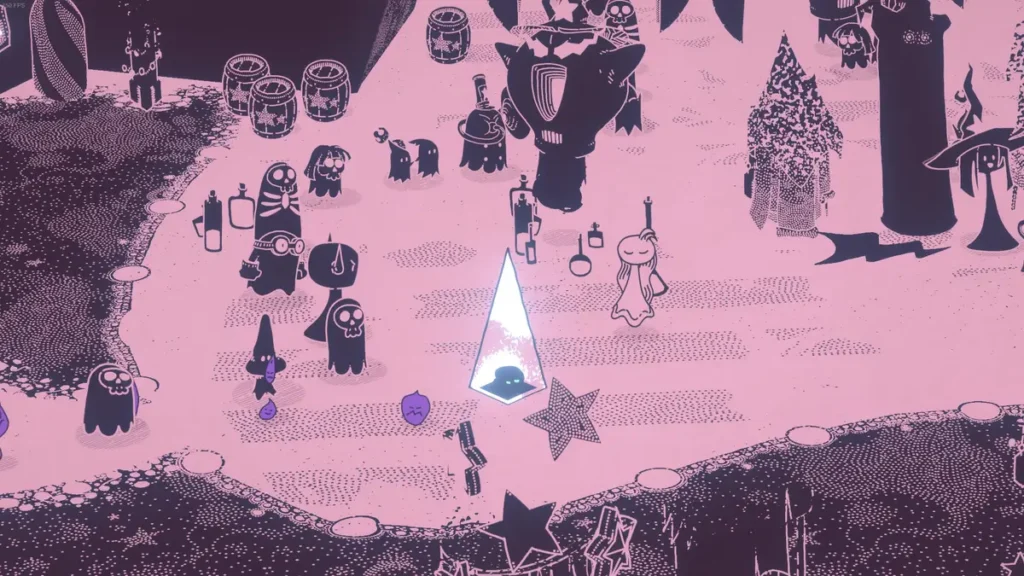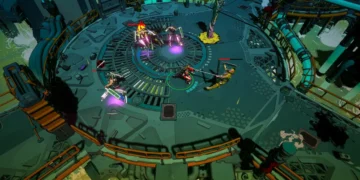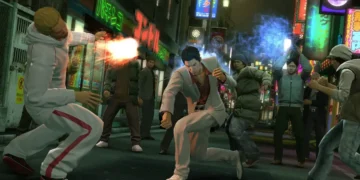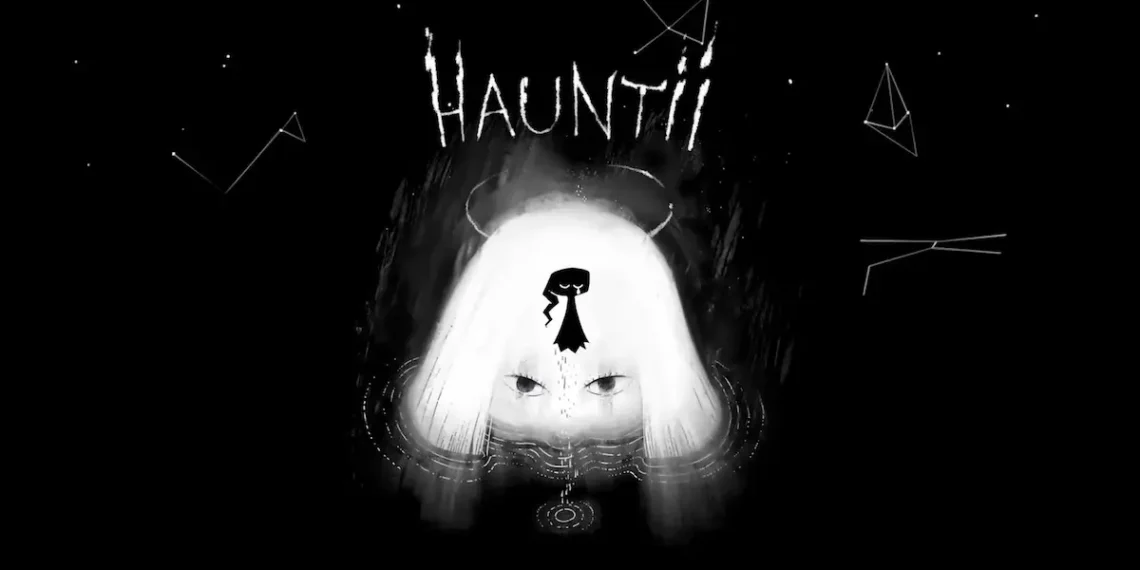Hauntii starts with a magical opening sequence and its players in a strange planet that sends out a beam of light in a close-up of a tear-shaped crystal artifact containing a little ghost within.
You are awoken as this ghost, Hauntii, who has crashed landed into the place called Eternity. Soon after, Hauntii meets a ghost girl who helps him to a tower and a plane from there.
Still, as she ascends, shadowy chains yank Hauntii back to her. This is where Hauntii’s travels to Eternity start; travels to find who the girl is and if he can ascend to the heavens.
Eternity is an intriguing world that is also segmented. Unlike in endless procedurally generated worlds, the world is divided into a series of worlds, stages that feel more like pathways.
Made to illuminate these paths, they mark the players’ way while also guiding and challenging the exploration of nearby areas.
However, it’s always with a constant underlying threat of disturbing distortions if you go too far off these paths, and eerie purple demon ghosts reach out from the shadows to grab you. The world here also kinda feel Super Mario Odyssey, with these spherical worlds and all kinds of secrets to explore.
Hauntii has nonlinear progressive exploration. While each stage flows smoothly into the next, you have to find collection of stars spread around the world to proceed.
You can earn stars by exploring optional paths in the free walkthrough or by diligently looking on the main track. It’s rarely cumbersome to collect these stars, and stages and such extra zones pop up as needed to allow players to collect more if they need them.
These stars aren’t just lying around, they’re either the result of a tricky puzzle using Hauntii’s ability to ‘haunt’ objects, or are dropped as rewards for leveling up.
Hauntii control objects by shooting the energy orbs at them. You can, for example, haunt lady bugs to fly from their treetops or bells to call in distant chimes.
Whether you are trying to get someone to return to their family or want to help lost animals find their way home, you can even haunt ghostly animals. But at each stage, you’re given new potentials to work with, to try haunting differently as you pass through the world.
Solving puzzles is really what makes it about Hauntii. There are tiny ways that hint at this: having haunted creatures to traverse an island of light, or changing items to make new paths.
But each puzzle might have you haunting a witch whose knapsack lights up stepped stones, or possessing a creature which can stomp to move an obstacle. The puzzles are structured so that each one adds a touch of discovery without overwhelming.

The enemies become stronger in the game itself. Hauntii also has stars which players can use to make constellations in the night sky that increases their health, their dash, or even their orb spitting power.
While this upgrade system is simple but effective, completing stars adds another purpose to what otherwise is a meaningless task. Not only are they functional, these constellations also put emotion to them.
As you complete a constellation, you unlock a tiny note, represented by a thought bubble illustrating a line drawing of some moment from Hauntii’s past: sitting down with a whale at an aquarium, some quiet happiness. These moments blurb bits of Hauntii’s past and reveal his story in small pieces, until we arrive in Eternity.
Conclusion
Hauntii is a first person magical introspective journey through a beautifully crafted world, in a unique persistent world architecture.
While every part of the game from solving puzzles to collecting stars to haunting creatures to killing hell spawn feels like further investigation into Hauntii’s quest for meaning.
The emotional intensity, stunning visuals, and alluring soundtrack give you an experience that you will never forget to explore and reflect. Hauntii is a must play for anyone looking for a game that’s both graphically stunning and meaningfully dramatic.
Also read: Kind Words 2 Review: A Heartfelt Reflection of Humanity Online



































